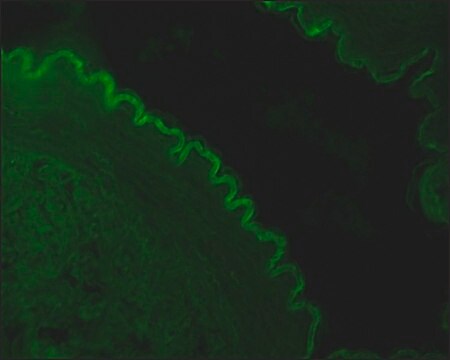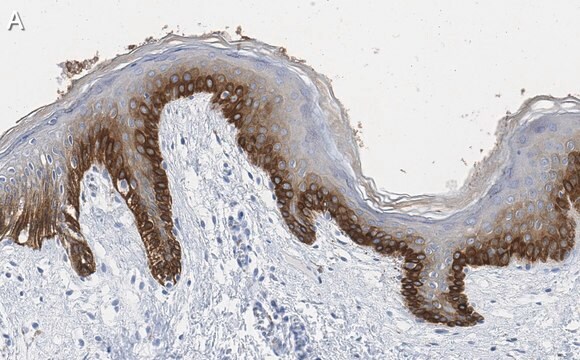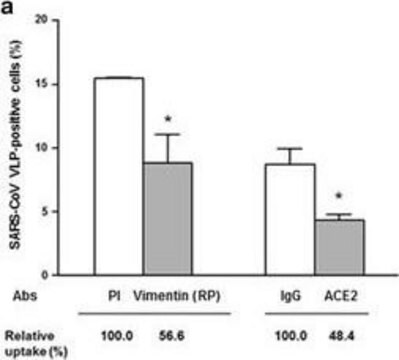추천 제품
생물학적 소스
mouse
Quality Level
결합
unconjugated
항체 형태
ascites fluid
항체 생산 유형
primary antibodies
클론
C-11, monoclonal
포함
15 mM sodium azide
종 반응성
bovine, mouse, frog, human, kangaroo rat, rat
기술
immunohistochemistry (formalin-fixed, paraffin-embedded sections): suitable using protease-digested sections of human or animal tissues
immunohistochemistry (frozen sections): suitable
indirect immunofluorescence: 1:400 using protease-digested, formalin-fixed, paraffin-embedded sections of human or animal tissues
western blot: suitable
동형
IgG1
배송 상태
dry ice
저장 온도
−20°C
타겟 번역 후 변형
unmodified
유전자 정보
bovine ... Krt1(100301161)
human ... KRT1(3848) , KRT13(3858) , KRT13(3858) , KRT18(3875) , KRT18(3875) , KRT4(3851) , KRT4(3851) , KRT5(3852) , KRT5(3852) , KRT6A(3868) , KRT6A(3868) , KRT6B(3854) , KRT6B(3854) , KRT8(3856) , KRT8(3856)
mouse ... Krt1(16678) , Krt10(16661) , Krt10(16661) , Krt13(16663) , Krt13(16663) , Krt18(16668) , Krt18(16668) , Krt4(16682) , Krt4(16682) , Krt5(110308) , Krt5(110308) , Krt6a(16687) , Krt6a(16687) , Krt6b(16688) , Krt6b(16688) , Krt8(16691) , Krt8(16691)
rat ... Krt1(300250) , Krt1-18(706059) , Krt1-18(706059) , Krt10(450225) , Krt10(450225) , Krt2-5(369017) , Krt2-5(369017) , Krt2-8(25626) , Krt2-8(25626)
유사한 제품을 찾으십니까? 방문 제품 비교 안내
일반 설명
면역원
애플리케이션
생화학적/생리학적 작용
면책조항
적합한 제품을 찾을 수 없으신가요?
당사의 제품 선택기 도구.을(를) 시도해 보세요.
Storage Class Code
10 - Combustible liquids
WGK
nwg
Flash Point (°F)
Not applicable
Flash Point (°C)
Not applicable
시험 성적서(COA)
제품의 로트/배치 번호를 입력하여 시험 성적서(COA)을 검색하십시오. 로트 및 배치 번호는 제품 라벨에 있는 ‘로트’ 또는 ‘배치’라는 용어 뒤에서 찾을 수 있습니다.
이미 열람한 고객
자사의 과학자팀은 생명 과학, 재료 과학, 화학 합성, 크로마토그래피, 분석 및 기타 많은 영역을 포함한 모든 과학 분야에 경험이 있습니다..
고객지원팀으로 연락바랍니다.









